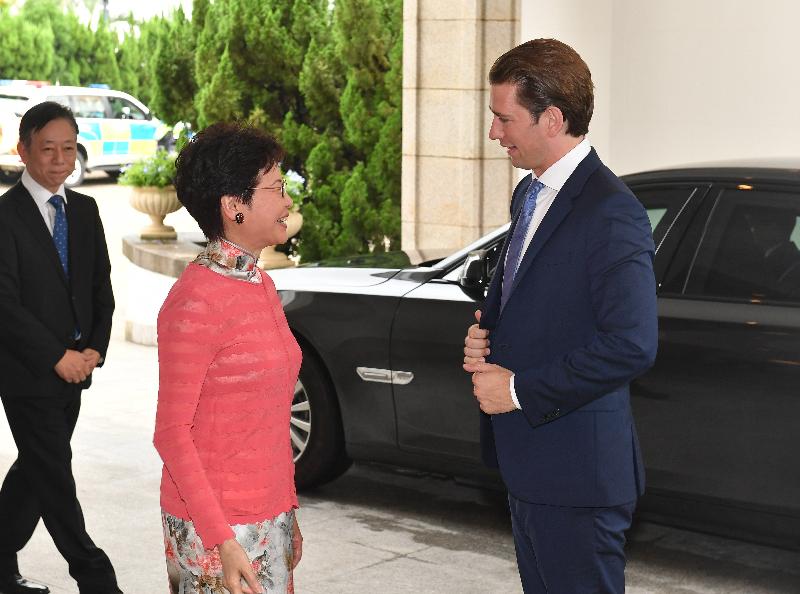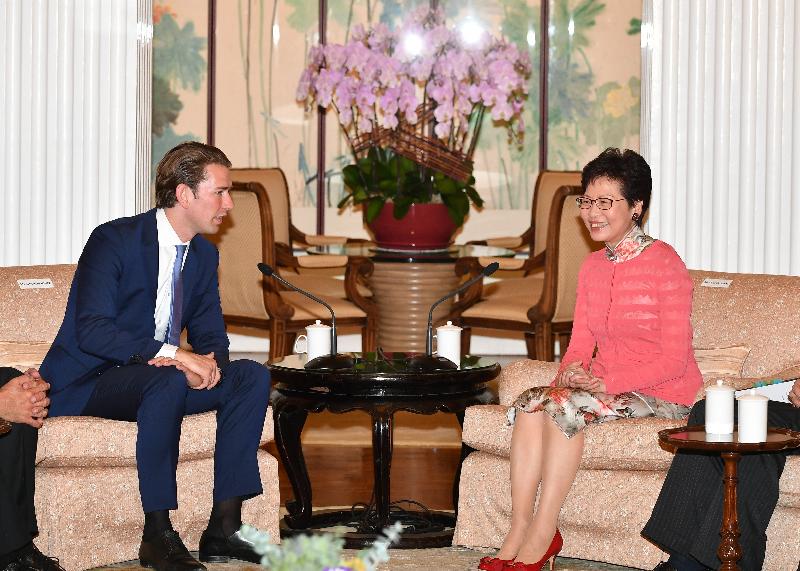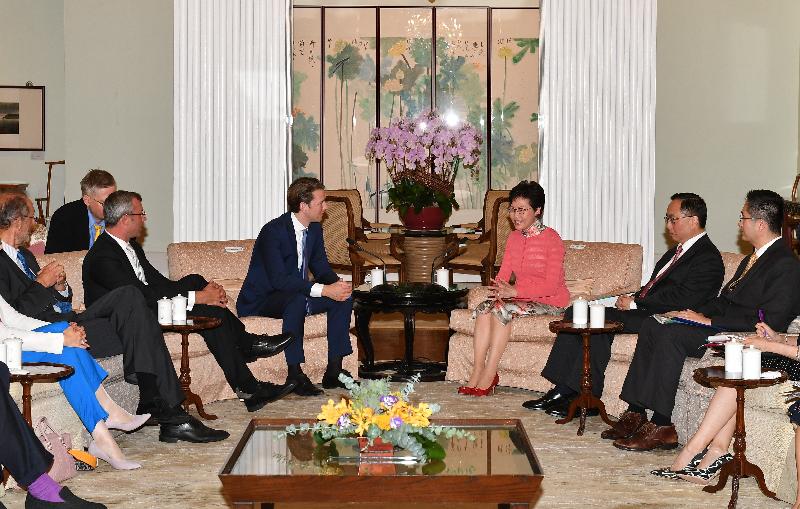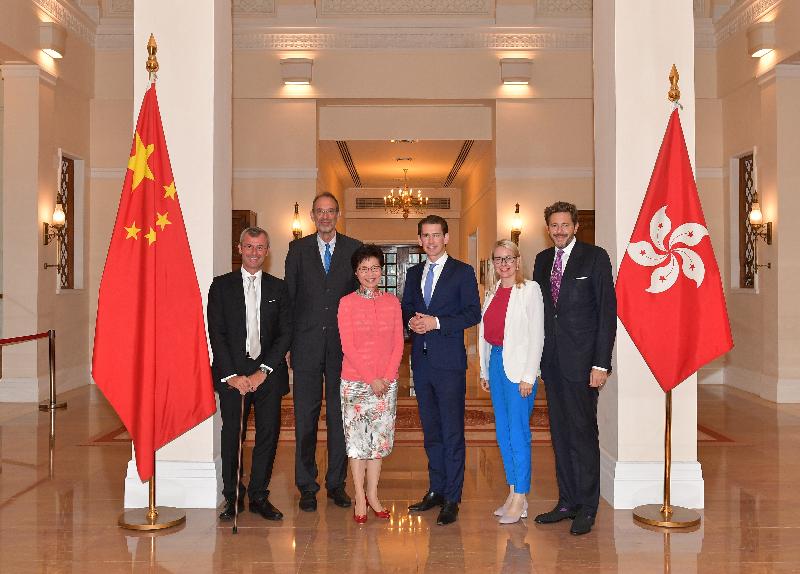CE meets Federal Chancellor of Austria (with photos/video)
The Chief Executive, Mrs Carrie Lam, met with the Federal Chancellor of Austria, Mr Sebastian Kurz, at Government House this afternoon (August 31).
Mrs Lam welcomed Mr Kurz and his delegation to Hong Kong, which includes three ministers, namely the Federal Minister for Transport, Innovation and Technology, Mr Norbert Hofer; the Federal Minister for Digital and Economic Affairs, Mrs Margarete Schramböck; and the Federal Minister for Education, Science and Research, Mr Heinz Fassmann, who Mrs Lam met during her visit to Europe some months ago. Mrs Lam said that she visited Vienna in the capacity of Chief Secretary for Administration in 2014, during which she invited a high-level delegation of the Austrian Federal Government to visit Hong Kong. She added that for this reason she was particularly pleased with the meeting today.
Mrs Lam said she was deeply impressed by Vienna's development as a smart city as well as its facilities and atmosphere relating to arts and culture. She noted that subsequently Hong Kong and Austria have signed memorandums of understanding on relevant aspects, and believed that this visit will further promote co-operation and exchanges between the two places.
Mrs Lam introduced Mr Kurz to Hong Kong's latest developments, including the successful implementation of "One Country, Two Systems", "Hong Kong people administering Hong Kong", and exercising a high degree of autonomy. After taking office last year, she has been committed to implementing a new style of proactive governance and, in particular, advancing the development of innovation and technology (I&T) in Hong Kong. She said that Hong Kong and Austria had established a very solid foundation working together in this area with the signing of a memorandum of understanding on co-operation in technology start-up ecosystems in 2016, and that collaboration and experience-sharing between technology start-ups in the two places have since advanced successfully. With the active participation of Hong Kong in the development of the Guangdong-Hong Kong-Macao Greater Bay Area and the establishment of an I&T hub within it, she invited Austria's higher education institutions and scientific research centres to set up a presence in Hong Kong for joint development.
Mrs Lam added that the development of arts and culture is one of her priority policy initiatives. She said the world-renowned Vienna Boys Choir set up its first overseas music academy in Hong Kong in 2011. Also, the soon-to-be completed M+ Museum and the Hong Kong Palace Museum in the West Kowloon Cultural District, together with the renovated Hong Kong Museum of Art, will bring the development of arts and culture in Hong Kong to new heights. She also expressed the hope that room for collaboration could be explored with the acclaimed MuseumsQuartier Wien.




